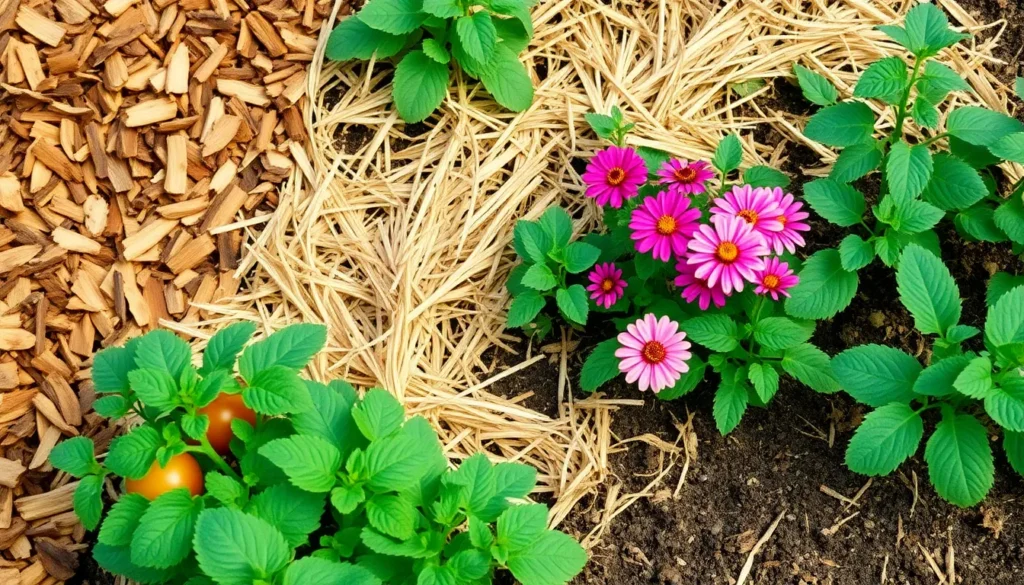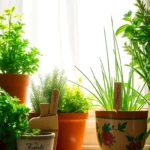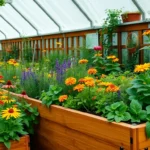Gardening is an art that blends patience with the joy of watching life flourish, and mulching is a key technique that can elevate your garden’s health and beauty. Whether you’re just planting your first seeds or you’re a seasoned gardener with a collection of thriving beds, understanding the nuances of mulching can substantially transform your gardening experience.
Mulching isn’t just about aesthetics; it’s a vital practice that conserves moisture, curbs weeds, and enriches the soil. In this article, we’ll explore six common mulching techniques that cater to different garden needs, helping you nurture a more robust and vibrant garden bed. By the end, you’ll be equipped with practical strategies to optimize your garden’s potential, ensuring that every plant has the foundation it needs to thrive.
Apply Organic Mulch for Nourishment
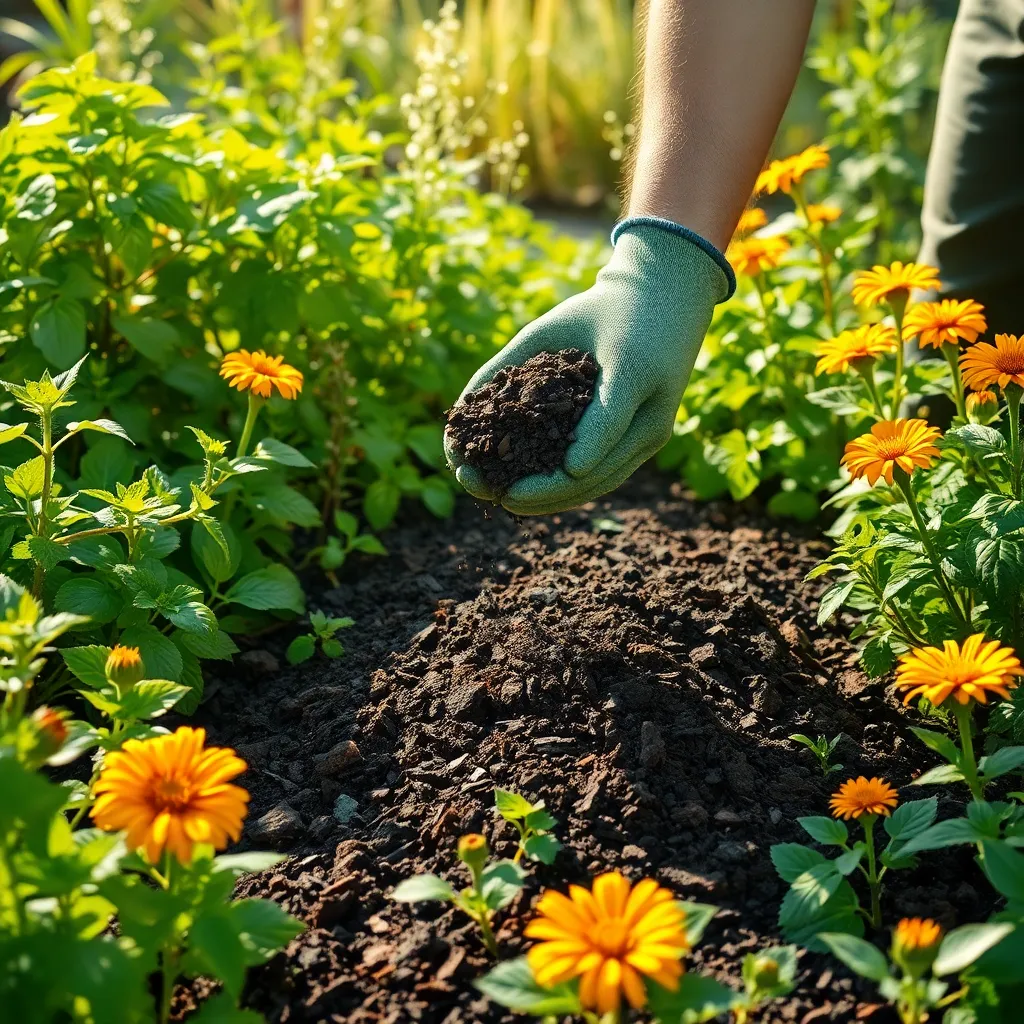
Applying organic mulch is a fantastic way to nourish your garden beds while conserving moisture. Organic materials like shredded leaves, straw, or bark chips not only enrich the soil as they decompose but also help suppress weeds.
To begin, spread a layer of organic mulch about 2-4 inches thick around your plants, ensuring the mulch does not touch the plant stems to prevent rot. This layer will help maintain consistent soil temperatures, which is especially beneficial during seasonal temperature fluctuations.
Consider using composted manure for an added nutrient boost, particularly if you’re growing vegetable crops. As the mulch breaks down, it will gradually release nitrogen and other essential nutrients into the soil, promoting healthier plant growth.
For more advanced gardeners, try varying the type of organic mulch based on the plants you’re cultivating; for instance, pine needles can acidify the soil, benefiting acid-loving plants like blueberries. Regularly check the mulch layer and replenish it as needed, especially after heavy rains or strong winds, to ensure continuous benefits.
Utilize Landscape Fabric for Weed Control
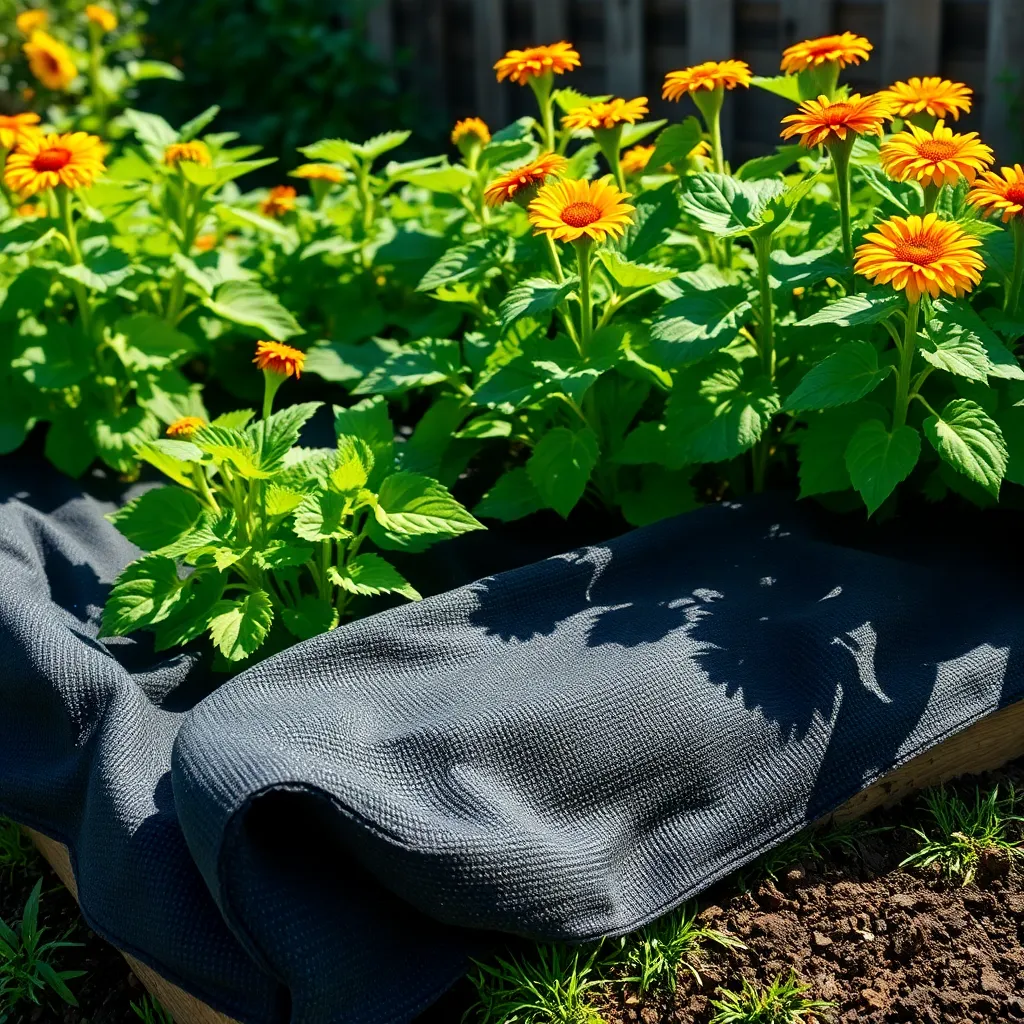
Landscape fabric is an effective tool for controlling weeds while maintaining soil moisture in your garden beds. By blocking sunlight, it prevents weed seeds from germinating and competing with your plants.
To install landscape fabric, first prepare the soil by removing any existing weeds and smoothing the surface. Lay the fabric flat over the area, ensuring it fits snugly around your plants by cutting slits or holes as needed.
Once in place, secure the fabric with landscape staples every few feet to prevent it from shifting. Cover the fabric with a layer of organic mulch, such as bark or wood chips, to enhance its effectiveness and improve the aesthetics of your garden bed.
While landscape fabric is low maintenance, it’s important to check for accumulated debris that can encourage weed growth on top of the fabric. Regularly inspect the edges and seams to ensure they remain secure, making any necessary adjustments.
Spread Wood Chips for Moisture Retention
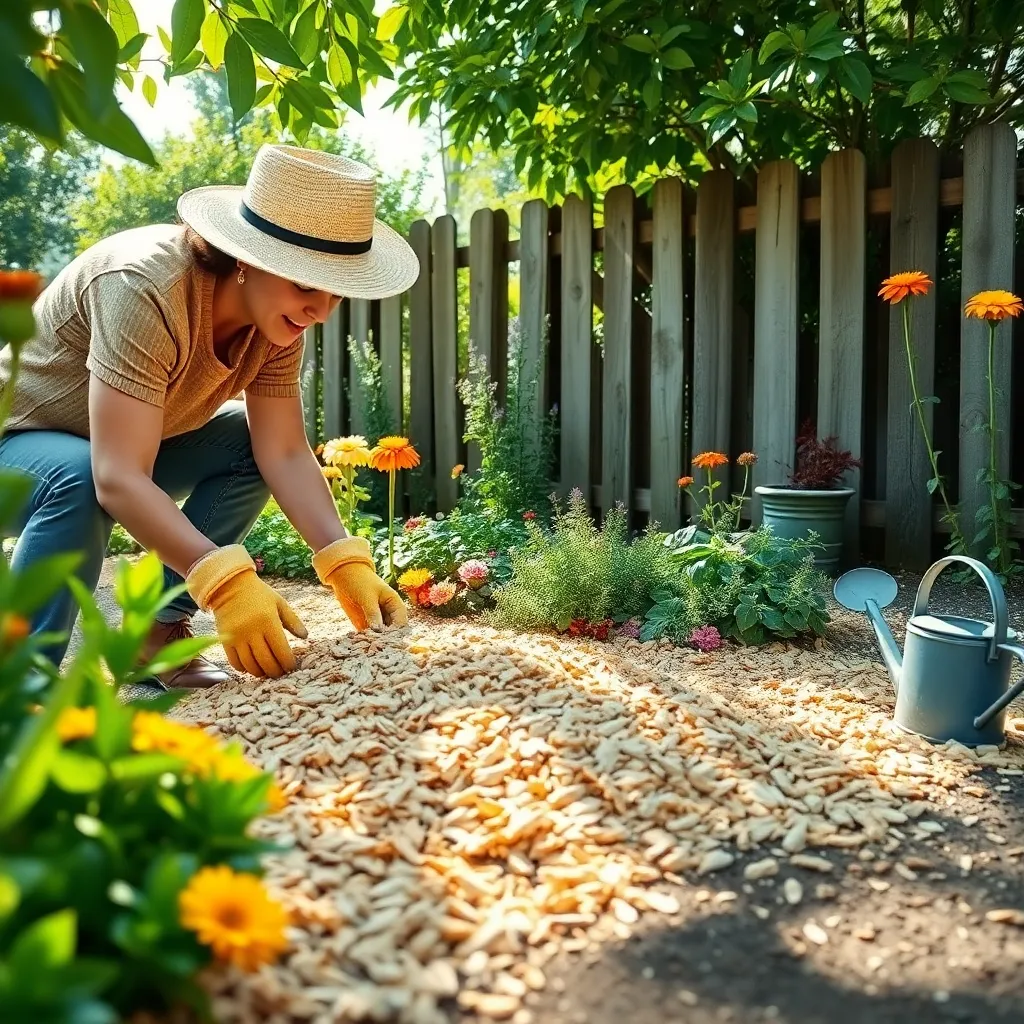
Wood chips are an excellent choice for retaining moisture in your garden beds, helping to keep your plants hydrated during dry spells. By spreading a layer of 2 to 3 inches of wood chips, you create a natural barrier that reduces evaporation and keeps the soil consistently moist.
Ensure that your soil type is compatible with wood chips, as they work best in well-draining soils where excess moisture will not lead to root rot. When applying wood chips, leave a small gap around the base of plant stems to prevent fungal diseases and pests from harboring.
For beginners, start by sourcing untreated wood chips from local arborists to ensure they are free of chemicals. Experienced gardeners might experiment with different types of wood, such as cedar or pine, each offering unique benefits like pest repellence or faster decomposition.
As wood chips break down, they enrich the soil with organic matter, improving its texture and fertility over time. Rake and replenish the wood chips annually to maintain their effectiveness, ensuring your garden beds remain a thriving and sustainable environment for your plants.
Incorporate Straw to Insulate Soil

Incorporating straw into your garden beds is an excellent way to insulate soil, helping to maintain a stable temperature around the root zones of your plants. This technique is particularly beneficial in regions with fluctuating temperatures, as it reduces stress on plants by keeping the soil consistently warm during cooler nights.
To effectively use straw, spread a layer about 3 to 6 inches thick over your garden beds, adjusting based on the severity of your local climate. Ensure the straw is free from seeds to prevent unwanted weeds from sprouting in your garden, which can compete with your plants for nutrients.
Straw not only insulates but also aids in moisture retention, reducing the need for frequent watering. Lightly water the straw after spreading to help it settle and bond with the soil, creating a protective barrier that minimizes evaporation.
Advanced gardeners may consider using straw in combination with other organic mulches, like leaf mold or grass clippings, for added nutrients. This layering technique can enrich the soil over time, improving its structure and fertility, which is especially beneficial for nutrient-hungry plants like tomatoes and peppers.
Use Gravel to Enhance Drainage
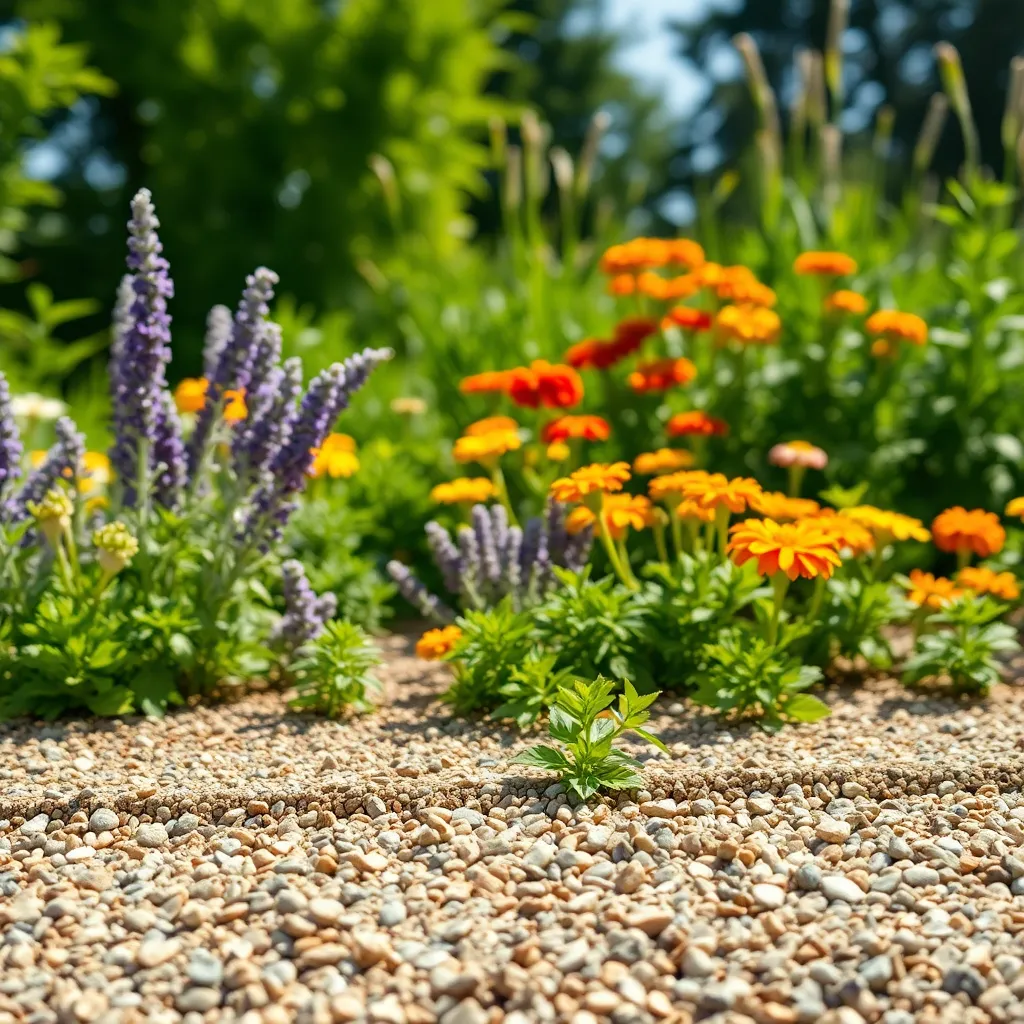
To improve drainage in your garden beds, using gravel is an effective technique that can be easily implemented. Begin by spreading a layer of gravel, about one to two inches thick, at the bottom of your planting area to prevent waterlogging and root rot.
Gravel acts as a barrier between your soil and standing water, ensuring excess moisture is efficiently drained away. This is particularly beneficial for plants that prefer well-drained soil, such as lavender and succulents, which thrive in drier conditions.
For those with clay-heavy soil, incorporating gravel can significantly enhance soil structure and aeration. By mixing gravel into the top 4 to 6 inches of soil, you create a more hospitable environment for roots, encouraging healthier plant growth.
While beginners can start with basic gravel layering, more advanced gardeners might opt for specific types of gravel like pea gravel or crushed granite to cater to their plant needs. Remember to water consistently but judiciously, ensuring plants receive enough moisture without overwhelming the drainage system you’ve set up.
Lay Down Newspaper as a Barrier
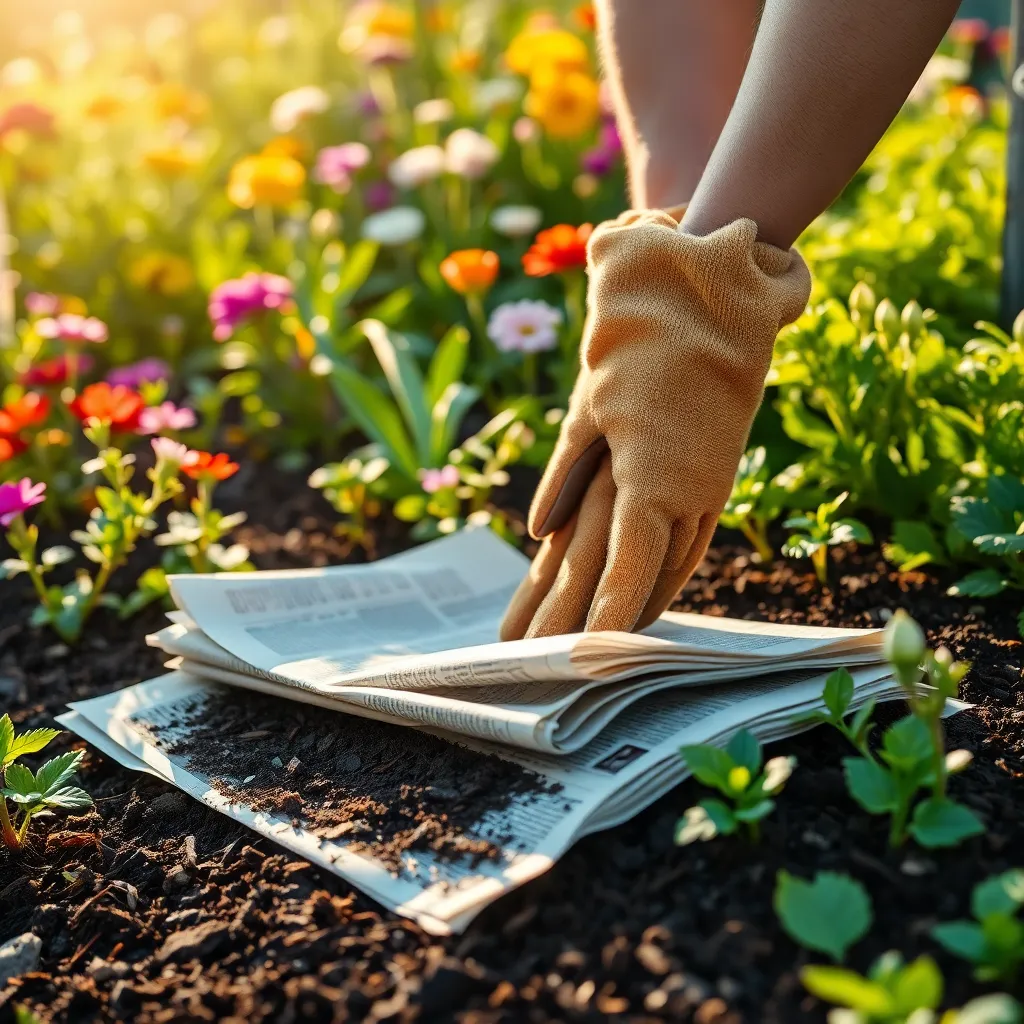
Using newspaper as a barrier in your garden beds can be an effective mulching technique. This method not only suppresses weeds but also helps retain soil moisture, making it a sustainable choice for eco-conscious gardeners.
To begin, gather several layers of newspaper and lay them directly on the soil surface. Ensure the newspaper is thoroughly soaked in water before placing it down, as this prevents it from blowing away and helps it conform to the soil contours.
For best results, cover the newspaper with a layer of organic mulch, such as shredded bark or straw. This additional layer not only improves the newspaper’s effectiveness but also enhances the garden bed’s appearance, contributing to a neat, tidy look.
It’s important to note that newspaper breaks down over time, enriching the soil with organic matter. As a result, this mulching technique is particularly beneficial for improving soil fertility, which is advantageous for both beginners and seasoned gardeners.
Advanced gardeners might consider alternating newspaper layers with compost for added nutrient benefits. This combination not only suppresses weeds and retains moisture but also feeds plants as the materials decompose, promoting vigorous growth.
Conclusion: Growing Success with These Plants
In exploring the “6 Common Mulching Techniques For Garden Beds,” we’ve unearthed the core concepts for nurturing healthy relationships through gardening metaphors: understanding needs, setting boundaries, consistent communication, building trust, adapting to changes, and celebrating growth. Just as a garden thrives with the right mulching techniques, so do relationships blossom with careful attention and care.
To immediately enrich your relationships, choose one technique that resonates most with you and implement it today. Whether it’s deepening communication or celebrating small milestones, taking even a small step can lead to significant progress.
Don’t let these valuable insights slip away—bookmark this article as your go-to guide for cultivating vibrant relationships. By doing so, you equip yourself with the tools to revisit and reinforce these concepts, ensuring that your relationships continue to flourish.
Remember, like a well-mulched garden bed, your relationships can thrive with consistent effort and care. Embrace these techniques, and look forward to a future where your relationships are as lush and fulfilling as the most beautiful garden. Your journey to relationship success starts now!

